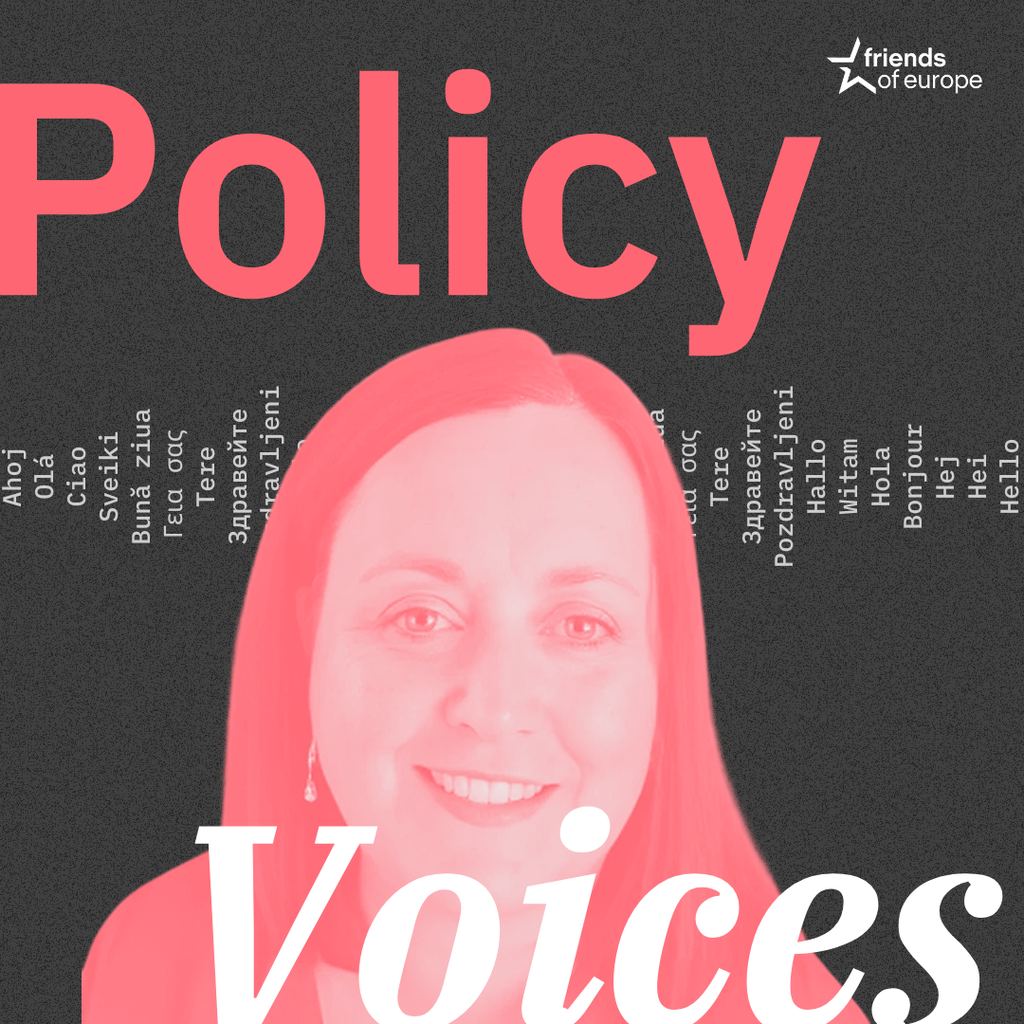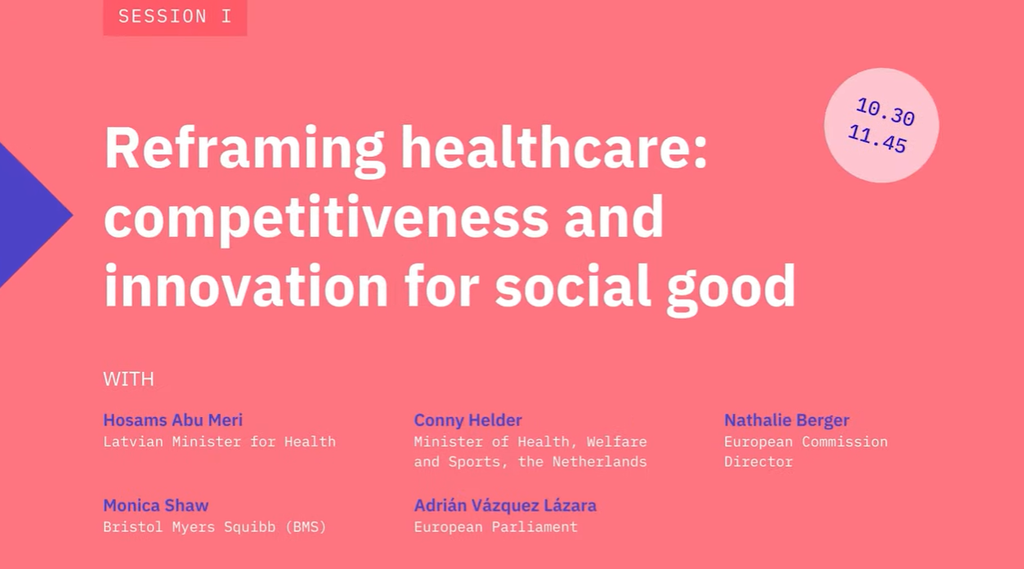Europe's moment: advancing clinical research and health innovation
Next event In person & online

- Area of Expertise
- Sustainable Livelihoods
Sustainable Livelihoods

Executive Director of Access to Healthcare at Amgen Inc
Meeting medical needs has always been the main driver of therapeutic medicine development. Medical innovation, particularly pharmaceutical innovation, begins where no prior therapy exists, or where improvements can be made to existing therapies with respect to efficacy, targeting or tolerability. This extends also to therapeutic alternatives with similar clinical trial efficacy or tolerability, as individual variations may exist with respect to either of these particular endpoints.
Medicines and medical needs are now largely moving away from infectious diseases to non-communicable diseases, with notable exceptions, and new medicines are being developed that may offer significant benefits over current alternatives. However, there is an emerging debate about the benefits and impact of pharmaceutical innovation and how they may be aligned with public health and health system needs.
In November 2020, the European Commission adopted the ‘Pharmaceutical Strategy for Europe’, which addresses priority areas including defining ‘unmet medical needs’ (UMNs) and the framework of incentives for innovation, among others. The driving forces behind the current legislative review for medicines in the European Union are to support industry to conduct innovative research, and to address perceived weaknesses exposed by the COVID-19 pandemic in the research, production and distribution of medicines in Europe.
Addressing UMNs can advance medical science towards improved health outcomes
The classification of a particular medical need as ‘unmet’ is central to the incentivisation and development of new health technologies. It is intended to encourage innovation in that area. However, the lack of a shared definition leads to inconsistent priorities across the healthcare system, as well as delays or barriers to the development of innovative therapeutic solutions.
Addressing UMNs can advance medical science towards improved health outcomes. As such, the definition should have a person-centred approach that considers the severity and burden of disease on individuals, families, caregivers and even people at risk of future conditions. Additionally, personal perspectives of those living with conditions under consideration should be sought to understand the benefits of ‘major therapeutic advantage’.
An innovative treatment can be described as addressing a UMN when it provides improved efficacy or safety over current alternatives, which includes no treatment option; addresses the needs of those who are unable to tolerate or fail to respond to existing treatment; improves the treatment delivery or experience; addresses existing or potential drug shortage or supply issues; or improves compliance in a clinically significant way.
Progress made on treating HIV provides a good example of the nuances of UMNs
If the Commission determines a narrow definition of UMN, focusing on specific patient populations or conditions with limited incidence, this may hinder the identification of the unmet needs in other disease areas and may be contrary to the broader aims of the Pharmaceutical Strategy. A narrow definition of UMNs could also drive innovation investment out of areas in which breakthroughs are most needed.
Progress made on treating HIV provides a good example of the nuances of UMNs. Between 2002 and 2016 the average death rate from HIV in the EU dropped from 12 deaths per million inhabitants to 6 deaths per million inhabitants, according to data published by Eurostat. This downward trend was largely due to more effective treatment, resulting in fewer deaths or death at a later age. While HIV may have fit the legislative definition of a rare disease when it emerged, the seriousness of the condition and its societal impact certainly spurred attempts to identify treatment options. UMNs have nuances that go beyond conditions with no treatment options.
Poorly defined UMN-related policies may have other consequences. A 2022 study by the European Federation of Pharmaceutical Industries and Associations (EFPIA), entitled ‘The Pharmaceutical Industry in Figures’, shows that the research and development (R&D) investment gap between global regions is widening. Between 1990 and 2019, R&D investment in Europe grew 4.9 times, while it multiplied by more than 9.5 times in the United States. Today, 48% of global new treatments are of US origin compared with just 22% emanating from Europe. Europe’s share of global R&D investment is decreasing relative to other major research centres and the ability to effectively compete for clinical research is not keeping pace with other countries. Leading-edge technology research units have been shifting from European locations, mainly to the US and more recently to China.
There may be a direct impact on people living with conditions that are included in clinical trial protocols
This growing gap could deepen as result of inadequate healthcare policy frameworks capable of retaining pharmaceutical R&D in Europe. The implication of losing pharmaceutical R&D is enormous in terms of financial resources, jobs, technological transfers, localisation of know-how and so on, but most of all, there may be a direct impact on people living with conditions that are included in clinical trial protocols.
Conversely, the US Food and Drug Administration’s (FDA) ‘Accelerating Rare disease Cures’ (ARC) programme is an exemplary policy that expressly favours R&D. Launched in May 2022, the initiative is set to speed up and increase the development of effective and safe treatment options addressing the unmet needs of people living with rare diseases.
A shared understanding of what constitutes a UMN is critical to providing a consistent, reliable signal to innovators and persons under treatment alike. Therefore, the Commission’s definition should take into consideration four ideas that may help frame the debate about UMN more broadly.
The process of defining a UMN should ultimately serve our communities and their medical needs
Firstly, if the Commission’s intent is to find ways of tailoring a system of incentives provided by the Pharmaceutical Strategy for Europe to stimulate innovation in areas of UMNs, then the approach may also need to consider the dynamic nature of R&D funding globally.
Secondly, a deep understanding of how research into UMNs has historically energised the innovation process will offer insight into the incentives that might attract or deter the conduct of pharmaceutical research in Europe.
Thirdly, decision-making must be oriented to favour a person-centred approach, in which the perspective of people and populations at risk are clearly considered.
Finally, the Commission should consider competitive factors, such as financial incentives and rewards for innovation, flexibility and speed of the existing regulatory pathways, and improvement of the predictability of post-regulatory processes, including member state actions on access and pricing.
The process of defining a UMN should ultimately serve our communities and their medical needs and provide a predictable and stable framework that rewards innovators for taking on a considerable amount of risk to develop medicines and therapeutics. All stakeholders in the medical value chain should aspire to improve health directly, while encouraging a research environment in Europe that continues to inspire the development of new, life-improving innovations that fight serious illnesses and address unmet medical needs.
This article is a contribution from a member or partner organisation of Friends of Europe. The views expressed in this #CriticalThinking article reflect those of the author(s) and not of Friends of Europe.
Next event In person & online

Past event In person & livestreamed

Past event In person

Past event In person & livestreamed





Stay informed
We use cookies and similar technologies to adjust your preferences, analyze traffic and measure the effectiveness of our campaigns. Learn more about our privacy policy.